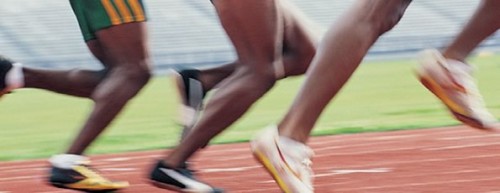Sports injuries Dorking
Treatment at Head2Toe Physio Clinic Dorking
Sports injuries Dorking – Sports Injuries refer to injuries sustained whilst playing or training for a sport. The injury may be due to a trauma or accident, or it may also be due to inadequate or poor training. Sports injuries can be acute (recently happened), or chronic (gradual onset or long standing).
Common acute injuries are:
Fractures
Stress
Fractures
Dislocations
Ankle Sprains
Muscle tears, like Hamstring tears or Calf tears
Common chronic injuries are:
Tennis Elbow
AchillesTendinitis
Sport related back pain
Spondylolithesis/ stress fracture
Plantar Fascitis
Shoulder impingement
Shoulder instability
Whether your injury is acute or chronic, treatment is likely to help. Acute injury management is aimed at ensuring optimum tissue repair, and alleviating pain and discomfort. This is likely to be achieved with manual therapy, exercises, and possibly electrotherapy. Chronic injury management is aimed at restoring tissues to optimum status, and restoring function. This may require adaptations to gait, biomechanics, and technique or training schedule, as well as treatment to relieve symptoms.
We are able to treat your sports injuries at our clinics in Dorking, Leatherhead and Crawley.
Sports injury management
If there are signs or symptoms of a serious injury (deformity, severe swelling and/or pain), first aid should be provided while keeping the athlete calm and still until emergency services arrive on scene.
However, most acute sports injuries can be treated safely at home using the P.R.I.C.E. principle.
• Protection
• Rest
• Ice
• Compression
• Elevation
The principles of P.R.I.C.E. should be used for the first 48 – 72 hours immediately after the injury. The goal during this time frame is to control the amount of swelling to the injured area, prevent further injury, and reduce pain. Following these principles can effectively reduce the amount of swelling in an injured area thereby reducing the amount of time required for rehabilitation.
Protection
Avoid further injury to the area by protecting injured structures. The type of protection used varies depending on the injured area but may include a bandage, splint, sling, protective tape, or brace.
Rest
Resting allows the body’s own healing processes to occur without being impeded by movement of the injured area. Any increase in movement of an injured tissue results in increased circulation to the area which in turn may result in further damage to the injured tissue and swelling.
If an athlete is in enough pain to have a marked limp, the athlete should be placed on crutches. Athletes can either be non-weight bearing or partial-weight bearing.
Ice
There are a number of types of cryotherapy that can be used effectively to treat injuries. The most common is an ice pack.
Ideally, ice packs are made of crushed ice because the crushed ice is more comfortable for the athletes and conforms to the contours of the injured area better than cubed ice. A light barrier should be placed between the skin and the ice bag (paper towel) to prevent injury to the skin during the application of the ice.
The ice should be applied for 20 minutes at a time and then removed. This can be repeated every two hours while the athlete is awake.
Some athletes are hypersensitive to ice or may actually be allergic to ice. In this case, the athlete’s skin may become red, raised, and blotchy where the ice made contact with the skin. If this occurs, immediately remove the ice pack and let the area rewarm.
Compression
When the ice pack is removed, a tubigrip or compression wrap should be applied to the injured area. The compression wrap serves as a mechanical barrier so that swelling is minimized in the injured area.
Elastic bandages come in a number of sizes and should be selected depending upon the body part that needs to be wrapped.
Elevation
The last component of the P.R.I.C.E. principle is elevation. Elevation is important immediately post-injury to reduce the amount of blood flow to the injured area. For the lower extremities, the athlete can elevate his/her leg by lying down and elevating the injured limb on pillows. The key is that the athlete needs to have the injured area above his/her heart level.
Following the PRICE principles is an effective way to minimize the swelling in an injured area so that the athlete can return to play quickly.
If you or anyone you know are struggling with Sports Injuries Dorking please contact us 01306 876072

